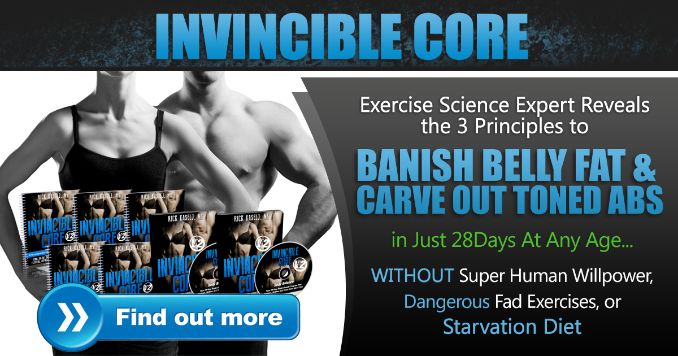
Core workouts promise flat abs and a stronger body, but if you’re like most people, you’re making core exercise mistakes — potentially putting your spine, hips, and shoulders at risk.
Let’s fix that.
Despite the plethora of exercises and tips available, research highlights a gap between effective core training techniques and common gym routines.
Why does this disconnect persist, and then how can we bridge it?
Below, we’ll uncover the most common core exercise mistakes and show you exactly how to correct them with science-backed movements.
Plus, we’ll explain how the core functions and why three-dimensional training is the key to sculpting real results — not just a temporary “burn”.
The core muscles are vital for maintaining a healthy spine and controlling other muscles in the body.
Strong core muscles can help reduce the risk of falls and then improve sports performance.
Top Core Exercise Mistakes (And How to Fix Them)
Let’s break down the biggest blunders and what to do instead.
Mistake #1: Only Training for Strength, Not Endurance
Most people chase that six-pack with heavy, short reps.
But the core fatigues fast, especially under load. It needs conditioning — not just strength.
Think longer planks, bird-dogs, and high-rep anti-rotation drills.
Mistake #2: Ignoring Rotational Movements
The core functions to resist and transfer rotation.
So if you’re skipping twists and anti-rotational work (like the tubing exercise), you’re only getting part of the picture.
Mistake #3: Poor Form = Pain & Injury
Training with a rounded back or arched spine puts pressure on your abs muscles, hips, and then knees.
Always return to a neutral spine and focus on form — not just reps.
Mistake #4: Overusing Crunches & Sit Ups
These target the surface-level six pack but often stress the neck, lower back, and hip flexors [2].
Swap them for functional moves like side planks, push ups, and hip extension drills.
Mistake #5: Skipping Planes of Motion
Your body moves forward, backward, side to side, and in rotation.
But many just stick to one plane.
Mix in exercises that challenge all movement directions — especially diagonal patterns involving the opposite leg and arms.
Mistake #6: Not Tailoring to Your Body Type
Your body type determines how your muscle groups respond.
Some people need more rotational stability, others more endurance.
A physical therapist can help customize your approach.
Mistake #7: Rushing Without a “Quick Reset”
Rushing through reps leads to sloppy form.
Between sets, take a “quick reset” — check posture, align your back knee and hips, and feel your core engage before moving on.
Step-by-Step: The Anti-Rotational Tubing Exercise (Your New Core Training Secret)
Most people train their abdominal muscles in one plane — think forward and back, like sit ups, crunches, or even push ups. But your core functions in 3D.
It’s responsible for rotational stability, resisting unwanted motion, and transferring energy across your entire body.
That’s why this Anti-Rotational Tubing Exercise is a must-have in your core workout plan:
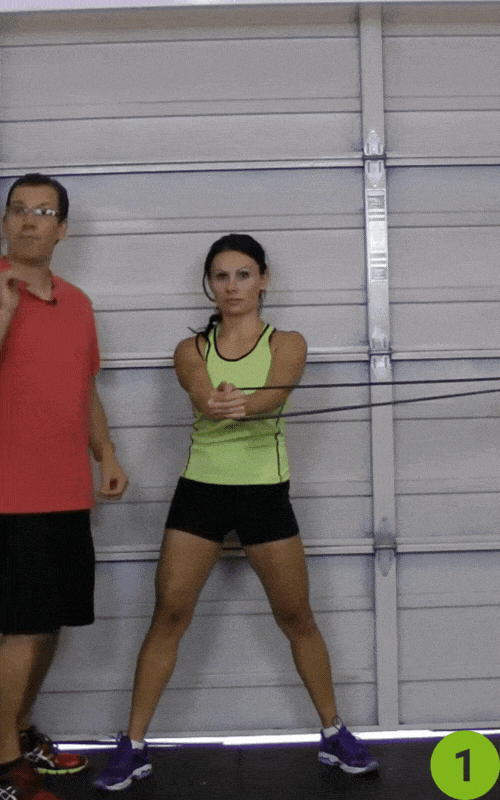
How to do it:
- Setup: Attach a resistance band or tubing at chest height to a fixed point.
- Position: Stand sideways to the anchor point, feet shoulder-width apart, knees slightly bent.
- Grip: Hold the tubing with both hands straight out in front of your chest.
- Execution: Step away to add tension, then hold the band in place for 10 seconds.
- Repeat: Release tension and reset. Do 3–4 sets.
Progression Tips:
- Make it harder by moving your hands closer or farther away.
- Advance it by raising your hands 45° above and then below your chest level.
- Challenge your core muscles further by doing the movement one arm at a time — inside arm first, then outside.
Progression 1
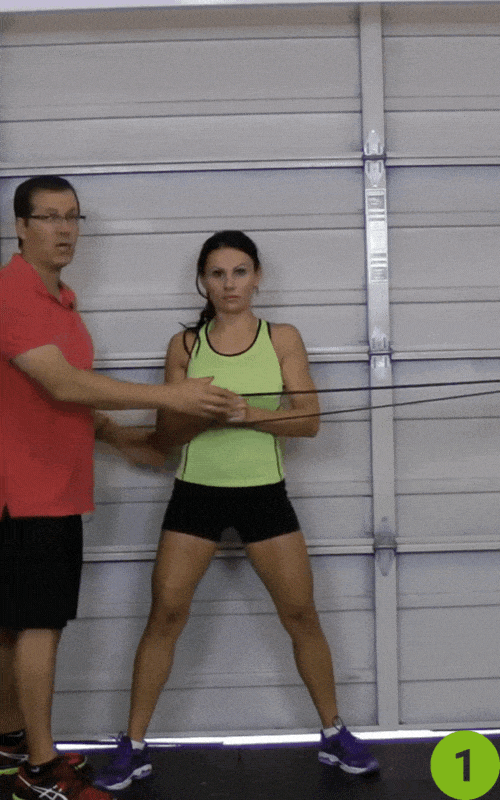
You can progress and make it harder by moving the hands closer and away—but beware of common core exercise mistakes that could compromise your form and results.
Progression 2
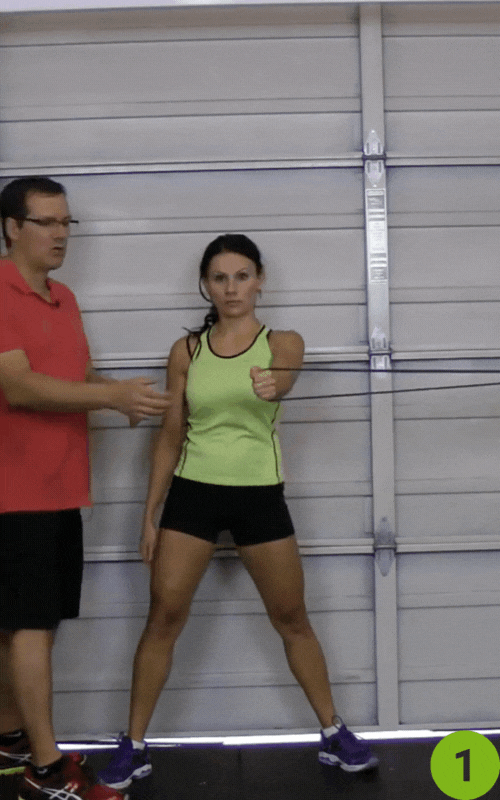
The next thing you can do is move the hands up to 45 degrees and then move them down to 45 degrees below.
Progression 3
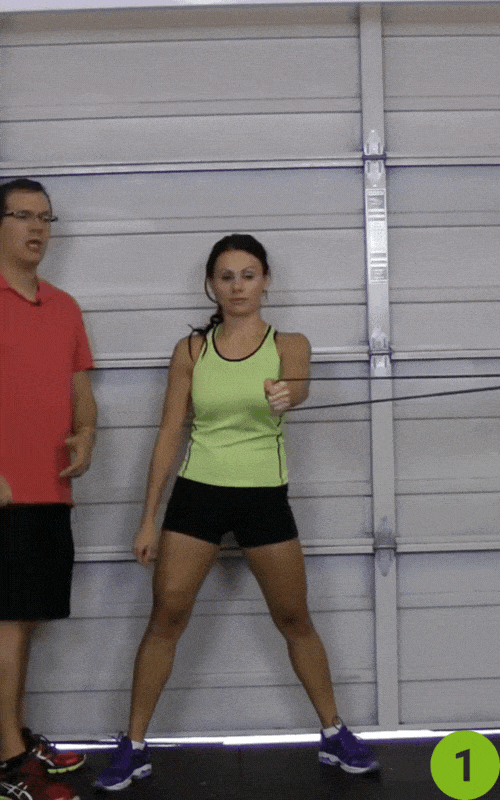
We are working on changing the planes of movement to where that tubing is pulling on the core.
Lastly, you can do the exercises one arm at a time. You can use the inside arm and then go with the outside arm.
This simple yet powerful exercise trains the internal obliques [1], improves motor control, and builds real-world core strength without overloading your hip flexors, back, or shoulders.
Why This Training Method Works
Unlike old-school core routines from long ago, this method trains you like an athlete.
You’ll build strength, endurance, and real-world movement skills.
Plus, you reduce your risk of injury while improving posture, balance, and overall progress.
You’ll feel it in your legs, arms, and shoulders, and see the results in your abs.
“The key to core training is not in creating movement, but in resisting it.”
— Dr. Stuart McGill, Professor Emeritus, University of Waterloo, and author of “Back Mechanic”.
Final Thoughts: The Smarter Way to Train Your Core
Core training isn’t just about looking good — it’s about moving better, feeling stronger, and living pain-free.
When done right, you train your core muscles to brace, resist rotation, and support every movement from lifting to lunging.
Remember: train in 3D. Engage your entire body. Respect your spine. And ditch the “crunch-only” mindset.
If you want to burn belly fat and get chiseled abs ― all without the risk of injury, then check out the Invincible Core program, here!
Frequently Asked Questions
What’s the biggest mistake people make during core workouts?
Over-relying on crunches. While crunches target the rectus abdominis, they neglect deeper core stabilizers like the transverse abdominis and obliques. A well-rounded core routine should engage all layers of your core—not just the “six-pack” muscles—to improve posture, protect your spine, and enhance everyday movement.
Why does my lower back hurt after core workouts?
You’re probably compensating with your lower back instead of properly engaging your core. This usually happens when form breaks down—like arching the back during leg lifts or planks. Proper alignment and slow, controlled movement are essential to activate the right muscles and avoid injury.
Can I do core exercises every day?
Not if you’re doing them incorrectly. Daily core work can backfire if your form is flawed or if you don’t allow for muscle recovery. Instead, focus on quality over quantity—3 to 4 well-executed core sessions per week are more effective than daily, rushed reps with poor technique.

